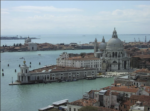Art Souvenir Al-bunduqiyya

La Fenice Gallery rinnova ‘Art Souvenir Al-bunduqiyya’ con la partecipazione di nuovi artisti e inediti di artisti già presenti.
Comunicato stampa
La Fenice Gallery rinnova 'Art Souvenir Al-bunduqiyya' con la partecipazione di nuovi artisti e inediti di artisti già presenti.
Opere di:
Giuseppe Abate, Amedeo Abello, Daniela Albanese, Edoardo Aruta, Alvise Bittente, Gino Blanc, Thomas Braida, Giacomo Briano, Ahmad Charaf E. K., Clown Poubelle, Angela Colonna, Lorenzo Commisso, Fabio De Meo, Marco Di Giuseppe, Suely Facchini/Marco Fagarazzi/Gioele Orrù, Robert Frankle, Nicolò Gemin, Gli Impresari (Edoardo Aruta/Marco Di Giuseppe/Rosario Sorbello), Marco Gobbi, Andrea Grotto, Giulia Incani, Nicolas Magnant, Rachele Maistrello, Christian Maretti Editore, Elena Mazzi, Corinne Mazzoli, Valentina Merzi, Valerio Nicolai, Sandro Pignotti, Poubelle, Alessandro Ragazzo, Andrea Rosara, Federico Sanna/Simone Sacchi, Elisa Sartori, Michele Spagnolo, Venanzio Straulino, Kreshnik Sulejmani, Cecilia Tirelli, Sara Tirelli, Chiara Tubia, Negin Vaziri, Valerio Veneruso, Serena Vestrucci, Nico Naïsky, Francesca Zucca, Angela Zuin.
Dalla radice di una parola, quasi quanto conoscere l’inizio di una storia personale, il termine Souvenir, in francese ricordo, è ormai un vocabolo molto comune, di cui forse si abusa, in quanto non si riconosce più in esso il significato reale, ovvero quello di raccogliere l’essenza di un determinato momento vissuto in un certo luogo, di cui si vuole preservare la memoria dell’esperienza.
I viaggiatori più attenti inseguono da sempre, per questa ragione, testimonianze d’arte e di cultura, piccoli trofei carichi di malia che contengano in esse il genius loci, un’identità culturale locale, rivolta ad un passato più o meno tradizionale o ad un valore simbolico.
Sin dal XVIII secolo, momento in cui i viaggi di piacere e gli spostamenti in genere subirono un notevole incremento, la propensione dei visitatori ad acquistare piccoli oggetti confezionati venne sfruttata commercialmente.
Ed è ancor oggi così: se molte cose negli ultimi secoli sono cambiate, rimane la necessità di raccontare l’”avventura”, mostrare di averla vissuta, esibire dei souvenir.
L’oggetto-memoria è quindi comunemente inteso come una piccola parte per raccogliere il tutto. E’ infatti un’espressione di cultura tangibile che contribuisce in ogni caso alla definizione del profilo identitario locale. Consapevole, o meno, il loro significato ha evidentemente ancora la carica necessaria per attirare l’attenzione. Alimentano le mappe mentali collettive e condizionano fortemente la rappresentazione di un mondo nel quale progressivamente gli spazi turistici e quelli culturali si sovrappongono.
Veicolo del progetto è perciò anche volontà di indagare sui meccanismi che portano al fenomeno merchandising tanta fortuna. Non possiamo dimenticare Piero Manzoni e la sua celebre ‘Merda d’artista’, novanta edizioni in lattina, che oggi possiamo considerare pioniere del merchandising artistico, la cui opera diventa spunto di riflessioni sul marketing.
Per merchandising si intende precisamente l’impiego di un brand o dell’immagine di un bene noto per venderne un altro; un processo vivo anche nel sistema dell’arte, dove tante volte è l’artista stesso ad indossare i panni di un luminoso brand.
"Damien Hirst is a brand, because the art form of the 21st century is marketing. To develop so strong a brand on so conspicuously threadbare a rationale is hugely creative - revolutionary even."
(Greer, Germaine - 22 September 2008, "Germaine Greer Note to Robert Hughes: Bob, dear, Damien Hirst is just one of many artists you don't get", The Guardian)
La Fenice Gallery accoglie il progetto Art Souvenir Al-bunduqiyya in un nuovo spazio di esposizione, tra bookshop e mostra collettiva, che vede gli artisti dialogare con il loro territorio e le relative convenzioni, in maniera ironica, intelligente, e alla portata di ogni tasca.
L’esposizione resterà allestita nella nuova stanza, aperta appositamente, che continuerà ad accogliere nuove proposte.
Il ricavato andrà a sostenere per metà l’attività de La Fenice Gallery e per l’altra metà il lavoro dell’artista.
(Al-bunduqiyya è il nome proprio di Venezia in arabo, l’unica città in Europa ad averne uno. L’origine è da cercare attorno la fine degli anni Mille, il significato è quello di ‘diverso’, con accezione di ‘bastardo’ come mescolanza di genti. Successivamente nel Trecento acquista un ulteriore significato che è quello di ‘fucile’, pare infatti che i Veneziani furono i primi ad introdurre l’arma da fuoco nei paesi arabi.)
A cura di Cecilia Tirelli
in collaborazione con Ana María Area Martínez, Biancamaria Milo e Sara Benetti.
---
La Fenice Gallery is pleased to invite you
Art Souvenir Al-bunduqiyya
Opening: Thursday 26th June, 6.30 p.m.
La Fenice Gallery renews Art Souvenir Al-bunduqiyya with the partecipation of new artists and new pieces by the artists of the first proposal.
Artworks by:
Giuseppe Abate, Amedeo Abello, Daniela Albanese, Edoardo Aruta, Alvise Bittente, Gino Blanc, Thomas Braida, Giacomo Briano, Ahmad Charaf E. K., Clown Poubelle, Angela Colonna, Lorenzo Commisso, Fabio De Meo, Marco Di Giuseppe, Suely Facchini/Marco Fagarazzi/Gioele Orrù, Robert Frankle, Nicolò Gemin, Gli Impresari (Edoardo Aruta/Marco Di Giuseppe/Rosario Sorbello), Marco Gobbi, Andrea Grotto, Giulia Incani, Nicolas Magnant, Rachele Maistrello, Christian Maretti Editore, Elena Mazzi, Corinne Mazzoli, Valentina Merzi, Valerio Nicolai, Sandro Pignotti, Poubelle, Alessandro Ragazzo, Andrea Rosara, Federico Sanna/Simone Sacchi, Elisa Sartori, Michele Spagnolo, Venanzio Straulino, Kreshnik Sulejmani, Cecilia Tirelli, Sara Tirelli, Chiara Tubia, Negin Vaziri, Valerio Veneruso, Serena Vestrucci, Nico Naïsky, Francesca Zucca, Angela Zuin.
From the root of the word, almost as knowing the beginning of a personal story, the term souvenir, in French memory, it is now a very common word, perhaps abused becouse it is no longer recognized as its real meaning: collecting the essence of a particular time lived in a certain place, as if we want to preserve the memory of the experience.
The more conscious travelers have always chased, for this very reason, works of art and culture, small trophies filled with magic which contain outstanding local cultural identities, pointing to a more or less traditional past or to a symbolic value.
Since the eighteenth century, when leisure travels and movements in general endured a significant increase in the propensity of visitors to buy small items packaged as necessary to carry home to remember a special place just met, was commercially exploited. Nowadays it is still like this: though many things have changed in the last few centuries , the fact remains: to leave and return back home is not enough, remains the need to tell the ‘adventure’, to show we have lived, to exhibit some souvenirs.
The journey has gradually changed the identity: the possibility destined to some lucky few explorers became an affordable activity to everyone, tourism that has to be consumed quickly, more and more widespread, but often superficial and inconsistent, where the small memory to defend worth more that the lived experience. The memory-object is commonly understood like a small part of the ‘everything’. It is indeed an expression of tangible culture that contributes in every case to the definition of the local identity profile. Aware, or not.
Also, these “scalps” of culture, today, shape the forms of remembrance. They are unrecognized, abused, stylized, miniaturized, but their significance still has the necessary power to claim attention. They feed the mental maps of community and they strongly influence the representation of a world where the touristic and cultural spaces overlap.
Purpose of the project is also the desire to investigate the mechanisms that lead to the lucky phenomenon of merchandising. We cannot forget Piero Manzoni and his famous ‘Artist’s Shit’, ninety editions in can, that today we can consider pioneer of the artistic merchandising, whose work becomes food for thought on marketing. For merchandising we mean the effort of a brand - or the use of a well-known product - to sell another one. A vivid process in the touristic system as well as in the artistic one: in this last one is the artist that puts himself in the shoes of a brilliant brand, undressing the masterpiece from its value.
“Damien Hirst is a brand, because the art form of the 21st century is marketing. To develop so strong a brand on so conspicuously threadbare a rationale is hugely creative – revolutionary even”
(Greer, Germaine – September 22nd 2008, “Germaine Greer Note to Robert Hughes: Bob, dear, Damien Hisrt is just one of many artists you don’t get”, The Guardian).
La Fenice Gallery welcomes instead Art Souvenir Al-bunduqiyya like a new space of communication and exposition, poised between an original shop and a collective exhibition, which sees young artists dialogue with their territory and the relative conventions, in an ironic and smart way, and affordable by anyone. Not to be forgotten the reworking of some stereotypes from which we depend. This often takes to unexpected re-evolutions of common objects, privileged material for artistic researches that try to give back authenticity to images.
The proceeds will go half to support the activities of La Fenice Gallery and the other half to the work of the artist.
The exhibition will be fitted out in the new room opened specially to admit new and ongoing artworks.
(Al-bunduquiyya is the Arab word for Venice, a unique example among European cities, for which there is no traslatino. Its origin dates back to the late 1th century and it means “different”, “bastard”, in the sense of mixed origins. Later on, in the 14th century, the word acquired a further meaning, “rifle”, probably because Venetians were the first who introduced firearms into Arab countries.)
Curated by Cecilia Tirelli
in collaboration with Ana María Area Martínez, Biancamaria Milo e Sara Benetti.



